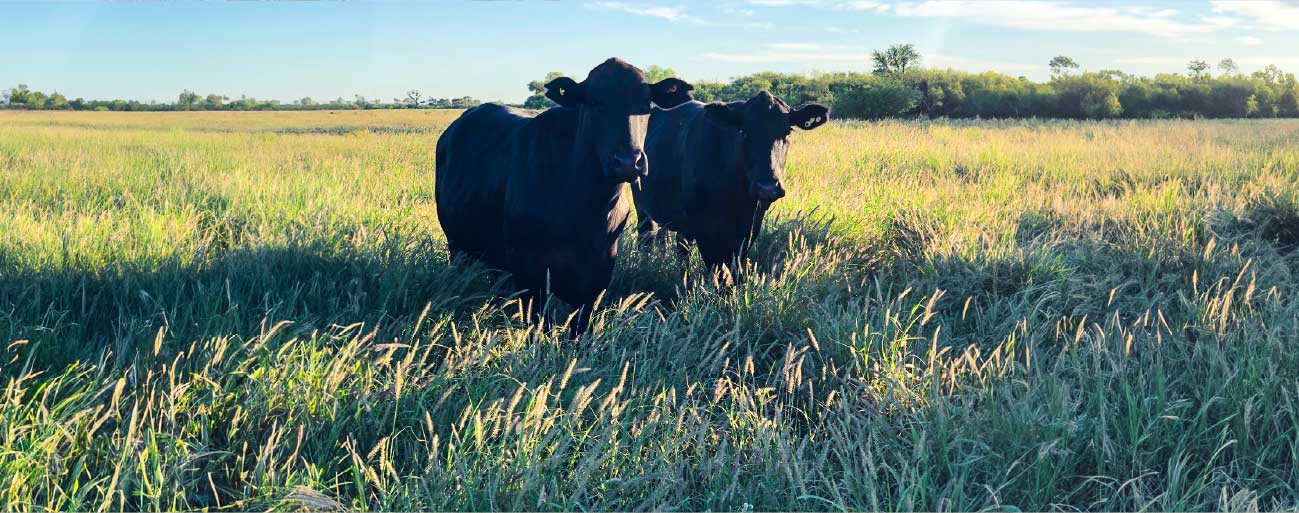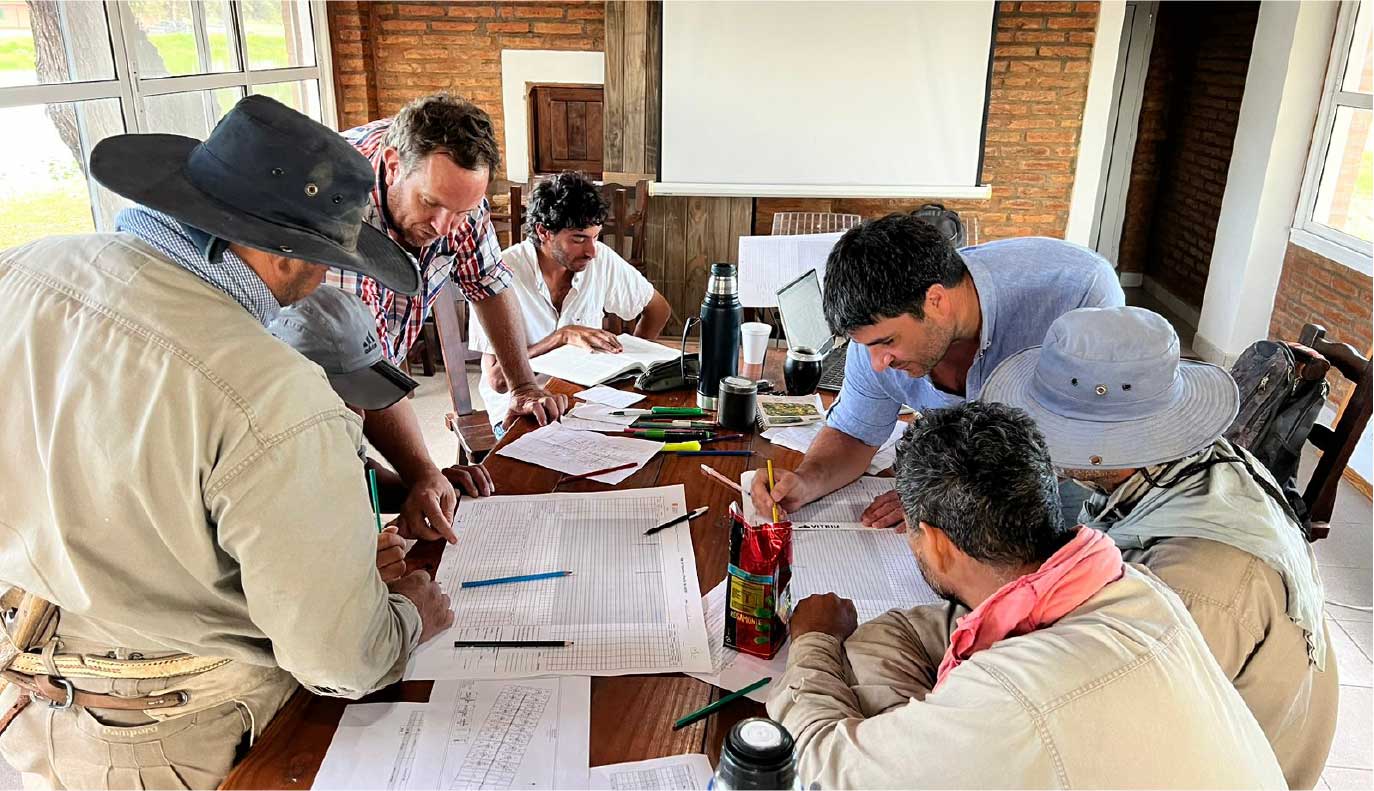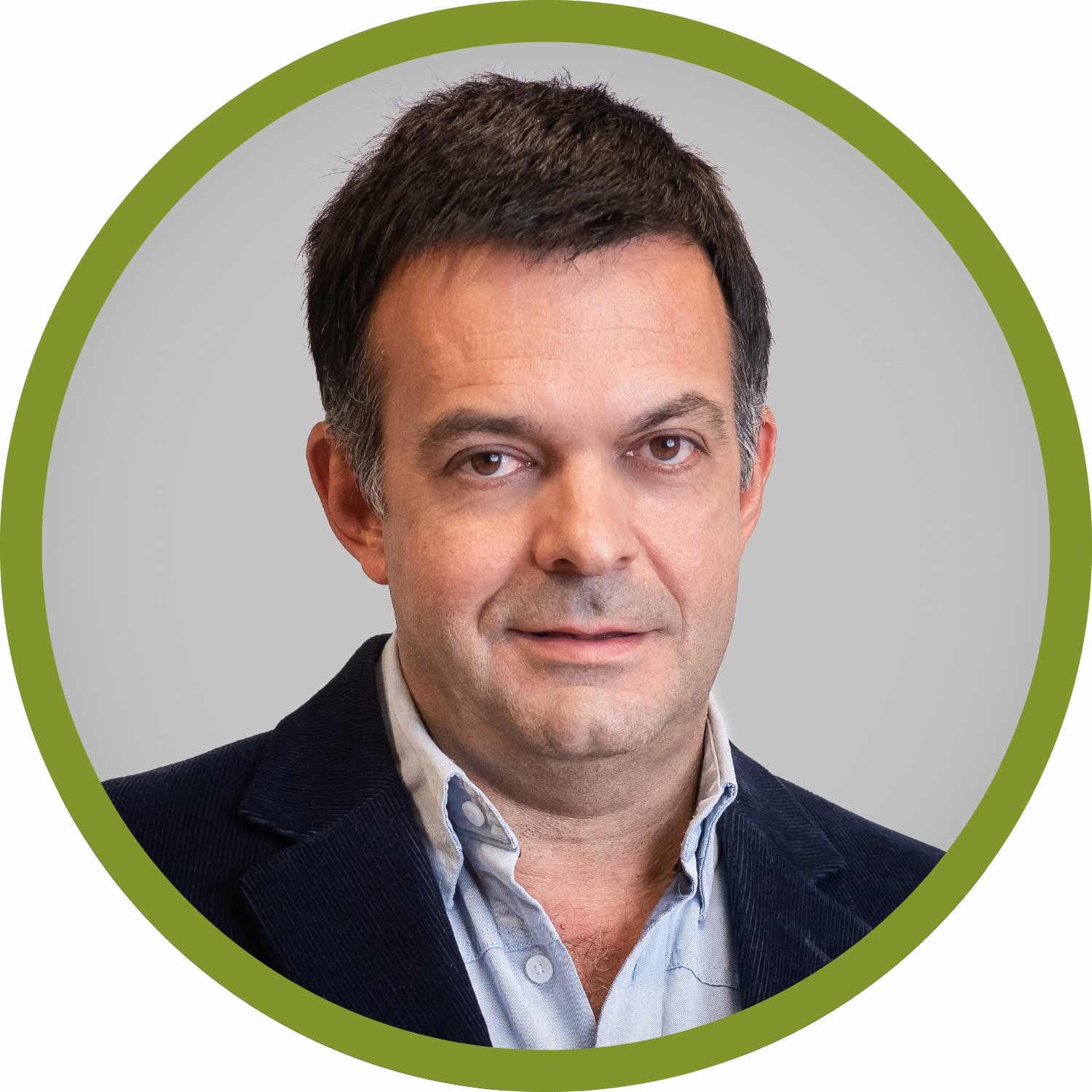First Steps in Holistic Livestock Farming
Download the articleEngordar started to apply the holistic method for regenerative livestock production in order to make the most of its strategic advantages.
Regenerative livestock farming is a new paradigm in terms of management. It forges an alliance among production, environment and business. It focuses on viewing livestock farming systems as an integral part of the ecosystems where they take place.
Unlike traditional methods which focus on maximizing production, this method has broader goals, aiming at achieving a sustainable balance between livestock and land, promoting the animals’ health and welfare, the regeneration and preservation of natural resources and biodiversity.

In holistic livestock farming, livestock feeding is divided into two production modules during the year:
Open Plan: pasture grows in spring and summer with cattle rotations by fields every 35 to 45 days.
Closed Plan: there are longer rotations, at about every 60 days.
First Steps
In March 2023, in La Porteña and El Carmen establishments, located in Santiago del Estero and in the northeastern part of Catamarca, respectively, we started to implement holistic livestock farming, which considers land and grazing planning and monitoring of the conditions of the animals, the soil and the pastures on a regular basis.
La Porteña:
5,000 hectares (Santiago del Estero) Activity: Rearing

El Carmen:
9,700 hectares (Catamarca) Activity: Breeding and Rearing

First we implemented the Open Grazing Plan Feeding Module in La Porteña, while, in El Carmen, due to the lack of rain during the last semester, we worked with the Closed Grazing Plan.
“We plan to put into practice this process in the seven livestock establishments. We chose to implement it first in the fields with more favourable conditions, such as a better pasture division, greater pasture coverage and better livestock management by the work team”, explained Daniel Navarro, Livestock Manager at Engordar.
“Pastoral planning implies the control and rotation of grass harvests. This guarantees that the cattle have access to pastures in good conditions at specific times, optimising their nutrition and promoting their health. It also helps maintaining an appropriate balance between grass demand and supply, preventing resource depletion and favouring sustainable productivity”, added Pablo Cianci, Agriculture and Livestock Farming CEO.
This new approach aims at eliminating monopasture, which, due to the fact that it grows and shrivels always in the same season, it prevents us from having a continuous pastoral supply throughout the year. We are replicating the natural environment, where there is a variety of pastures available.
“Our work consists in making pasture be in constant growth and development. When the pasture is fully developed, we start harvesting with our cattle and, in this way, we transform plant tissue into meat”, explained Daniel Navarro.

Teamwork
This comprehensive system involves all the production areas, including all the staff, in its planning and execution. What used to be decided by an engineer is now carried out with all the team which gathers to think on all the work stages throughout the year.
The engineers in charge of the project were specifically trained to carry out the implementation. In addition, during this first stage, Engordar has a team of consultants who guide and provide support in this process.
To guarantee efficiency and the appropriate control of the progress made, we bought a new production management system, an IT platform which enables us to collect information in an automatic and precise manner, making control and planning tasks easier.
Sustainable Balance among Cattle, Land and Environment
“We always try to be as efficient as possible in each hectare we have. Practices evolve as new theories and technical approaches suggested by our team appear”, said Pablo Cianci, Agriculture and Livestock Farming CEO.

Livestock Farming Can Be Part of the Solution to Climate Change
What is a carbon bomb?
Regenerative livestock farming turns pastures into “carbon bombs”, which sequesters tons of CO2 from the atmosphere and, in this way, producers contribute directly to solving climate change. In order to have greater carbon sequestration and increase efficiency in water use, the animal also performs other actions apart from cutting and “reactivating the bomb.” The cattle transform the plant tissue consumed into organic matter by means of their manure, and, make that organic matter return to the soil which produced it. The cattle’s urine also contributes inorganically by providing the soil with nitrogen.
There is also a mechanical effect performed by the cattle, which, while walking, kick and break down plant tissue which, if it were not for that action, would be blown by the wind. Cattle help settle it and put it into contact with the soil.
Sustainability and Livestock Production
The holistic method is crucial for the future of livestock farming due to its various advantages:
- It ensures animal welfare.
- It is cheaper in terms of production costs.
- It allows for greater carbon sequestration.
- The meats produced by this method are better in terms of fatty acids and proteins.
- The square metre of pasture shows a better environmental balance.
How Did Holistic Management Appear?
Holistic management was developed by Allan Savory, a biologist from Zimbabwe, after 40 years of experience. Throughout his career as a conservationist, Savory was obsessed with land degradation until he found the key to solve this puzzle: the cattle can be part of the solution to this problem.
Thus, he started giving advice to livestock producers, regenerating lands all over the world, and polishing the methodology based on the problems he encountered. Despite knowing how to improve livestock management, many establishments failed usually due to the lack of financial planning and infrastructure, and, mainly, due to the lack of a context for decision making. That is how he came up with holistic management, where all these aspects are considered.
In 2011, the Savory Institute was created, a global NGO which aims at regenerating pastures on a large scale through Holistic Management.

Daniel Navarro
Livestock Farming Manager

Pablo Cianci
Agriculture and Livestock Farming CEO

